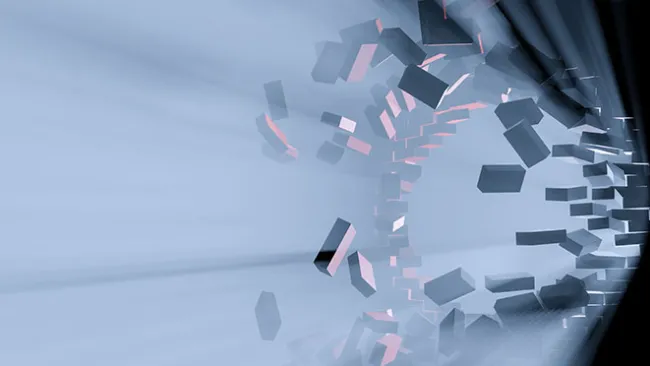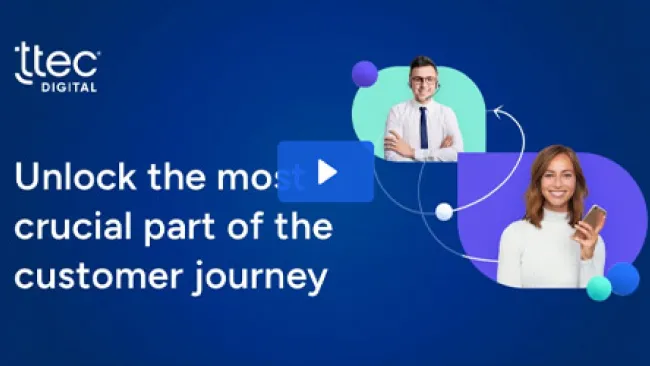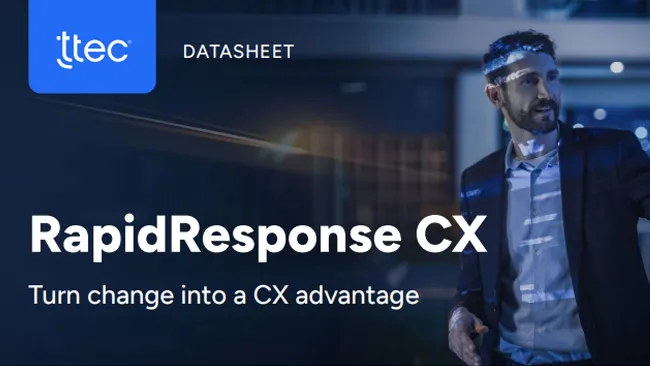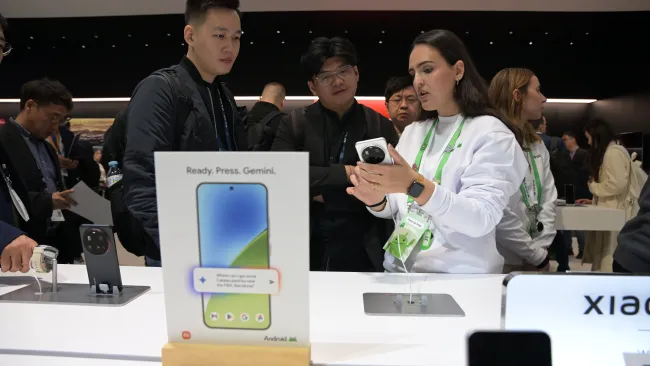After more than eight decades in operation, last January Motorola split into two parts. Its consumer-oriented side became Motorola Mobility, and its professional-focused business was titled Motorola Solutions. With Google on track to acquire Motorola Mobility, Motorola Solutions is poised to soon become the only Motorola. However, Motorola Solutions has been a virtual unknown to consumers. Its products—ranging from two-way police radios to retail barcode scanners—are used by the government, public safety officials, and businesses. Although those products play a major role in people's daily lives, this was the part of the company few knew about.
Under the watchful eye of CMO Eduardo Conrado, Motorola Solutions aimed to spark that knowledge. Conrado and his team designed a multichannel marketing strategy that would showcase the rebranded company to its 23,000 employees and present Motorola Solutions to the general public—while retaining the history and prestige associated with the Motorola brand. The message was simple: Since its products are used by first responders, Motorola Solutions impacts consumers' safety, security, comfort, and health.
Here, Conrado explains Motorola Solutions' strategy to marry the past with the future, retaining its heritage while embracing new channels to engage consumers.
Customer Strategist: After the split, Motorola Solutions needed to rebrand, yet maintain its heritage. What challenges did this pose?
Eduardo Conrado: The split triggered the need to take a look at the brand itself. In the past few decades Motorola had lived both in the consumer and in the business-to-business worlds. From an external-facing side it looked like Motorola was inherently focusing on the consumer, including the products and advertising that people saw. We went back and looked at Motorola's history, where the company would be post-split, and where the brand should go. That's what triggered the redefinition of the brand.
Motorola was a brand that was always innovating and was one of the original high-tech companies in the United States. The challenge was making sure not to leave any of that history behind to be forgotten. But we also looked at [the rebranding] as an opportunity to reset the brand in a new direction based on the customer set that we've been serving: on one side public safety and government, and on the other, the business segment, including retail, manufacturing, and transportation. The brand was already established and had great heritage, so we didn't want to start from scratch.
CS: Employee engagement is imperative in such a major rebranding. How did you ensure that your thousands of global employees were knowledgeable about Motorola Solutions' purpose and promise and became ambassadors for the company?
EC: Externally, we wanted to tell people about our brand promise: "We innovate to mobilize and connect people in the moments that matter." We looked at this promise and how we could bring it to life in our campaign. When we were halfway through the process, we realized that [we should go beyond] an external campaign focused on the brand promise; it was also an opportunity for our employees to get energized about the direction the company was taking.
We went around the world conducting focus groups, getting feedback from our employees about the value of the company. Then, even before the official split, we rolled out an internal communication platform focusing on Motorola Solutions' purpose and promise. We went back to our roots, the company's purpose, which is helping people be their best in the moments that matter. Called Moments Captured, the campaign included posters with snapshots of our customers, freezing a moment in time, and telling the story of that moment when Motorola's solutions were needed. We wanted to inform, inspire, and engage employees by showing them tangible proof of these moments of change that Motorola Solutions contributed to.
When we rolled out the information to the employee base, we went in to our 27 major facilities over the weekend and took down the old branding, which included a mixture of B2B and consumer-focused products and solutions. We replaced this with the new branding, our Moments Captured posters that tell the stories about our purpose so employees could visualize the new brand. We supplemented this with town halls that talked about the change.
CS: How did you deliver the Motorola Solutions message to consumers?
EC: We embarked on our Rise to the Moment campaign to introduce Motorola Solutions to people around the world. The integrated marketing campaign was rolled out across multiple channels, including our Facebook page and YouTube channel, to deliver one message, our purpose: We are helping people be their best in the moments that matter. It was a forward-looking campaign, showing preparations for that important moment. It told the stories of the unexpected moments and how the technology and solutions we have help [our customers] be their best in that moment that could still be coming, whether it's helping police apprehend a man on the run or a retailer making sure he has a pair of jeans that a consumer is looking for in stock. We talked directly to customers about how Motorola Solutions is addressing specific needs, especially in public safety. The campaign resonated very well with our clients.
The external campaign worked hand in hand with the internal one. The yin and yang was that while internally we were looking backwards at captured moments that matter, externally we were looking at instants in the future and stressing how we can help our customers be better in those moments that would impact their own customers.
CS: Customers are using different modes of communication to get information about the brands they're interested in. Describe your multichannel marketing campaign.
EC: Both internally and externally the new brand message touched every channel. Internally, we organized town hall meetings, face-to-face communications, and delivered messages on Motorola TV. The latter was the main communication vehicle for the campaign in which we used closed-circuit TV systems in all our main locations to run static shots and messages. We also used a new Brand Central portal, a Q&A forum, videos, and informational emails. For example, one email informed employees that our two-way radios played a part in the rescue of the Chilean miners.
We developed a manager toolkit, published a coffee table book for leaders, and developed screen savers for both computers and mobile phones. Moreover, we trained our marketing and communications teams, as well as our agency partners—large and small—on the new strategic brand framework, the available assets, and how to write in the new voice.
From an external perspective, the message spanned our website, social media channels, customer portals, paid advertising, earned media placements, ringing the closing bell at the New York Stock Exchange on the day we officially separated, industry analyst engagements, and financial analyst meetings, among others.
CS: Your new website includes videos capturing moments when Motorola Solutions' products helped service providers excel in their jobs. What part did social media play in delivering your message to customers and consumers?
EC: We view social media as an important channel for all of our messages. We're active across Facebook, Twitter, YouTube, and LinkedIn, and we used these channels as another avenue for telling the story of our separation, new name, new purpose, and positioning as an independent company focused on government and enterprise customers. For example, in January we posted a number of messages on Facebook to share information about the separation of the two companies, including quotes from Greg Brown, Motorola Solutions' president and CEO. We also used Facebook to publicize links, for example, to articles about the split.
Employee engagement focused more on our separation and new name. We provided employees with sample posts to use on their own social media accounts and encouraged discussion on our internal Twitter-like forum.
CS: How did you customize your message for the different countries you operate in?
EC: We have presence in more than 100 countries and we wanted to capture the important moments in the different regions. It took a lot of effort to work on communicating our purpose to each individual market in a meaningful way. It started with the little things, for example shooting all local photography and then bringing the images to life as posters for the Moments Captured campaign. We wanted to engage employees in the different regions, so we created a handful of the posters as an example and then told the teams around the world to create their own. If you walk into a Motorola Solutions office, the images on the walls tell a local story.
Additionally, our engineers were able to see their product in action through these campaigns. Many times, if you work on a chip or software, you don't necessarily know how it is working within the bigger picture. But by telling the story from a customer's point of view, we were celebrating what engineers do. This also allowed our sales team to know, and be able to relate, the bigger story that was behind each product.
CS: How will you continue passing on the message to your customers?
EC: Now that we've laid the foundation with our strategic brand framework, we are focused on growing all of Motorola Solutions by moving to a customer-centric marketing approach. The customer feedback we received showed that we'll have more meaningful conversations if we start talking about our clients' needs and challenges rather than our products. Our plan is to continue focusing on how our solutions impact customers, together with the promise of being there at those moments that matter.
It will continue with every solution and product launch that we have.
















